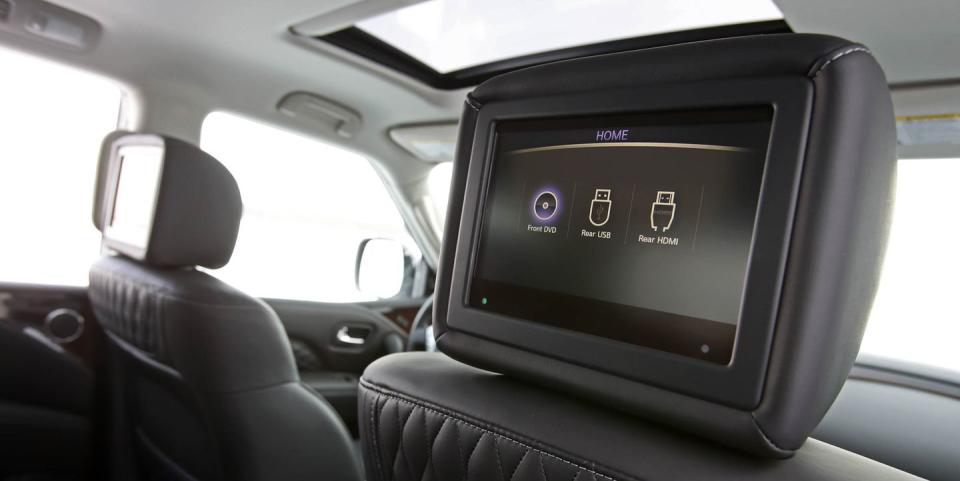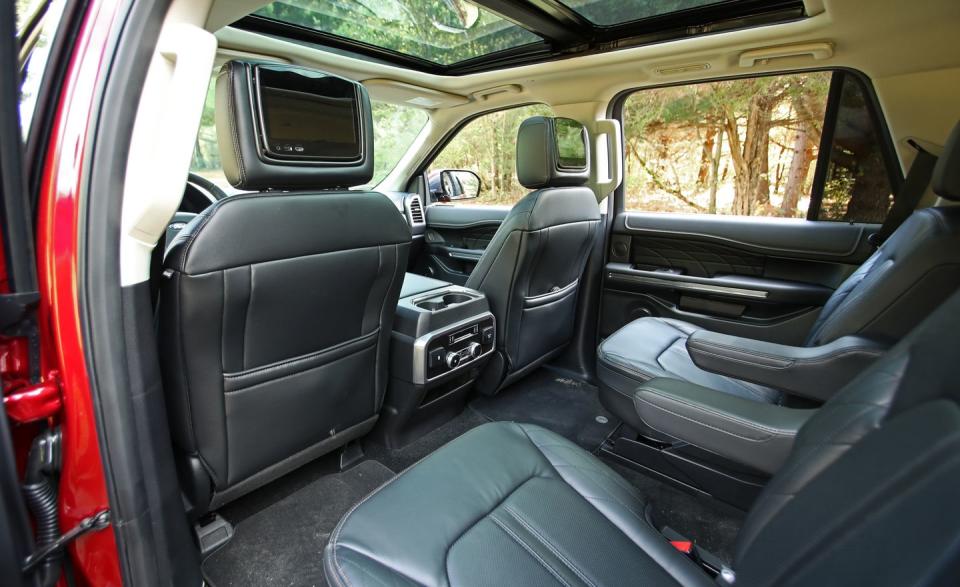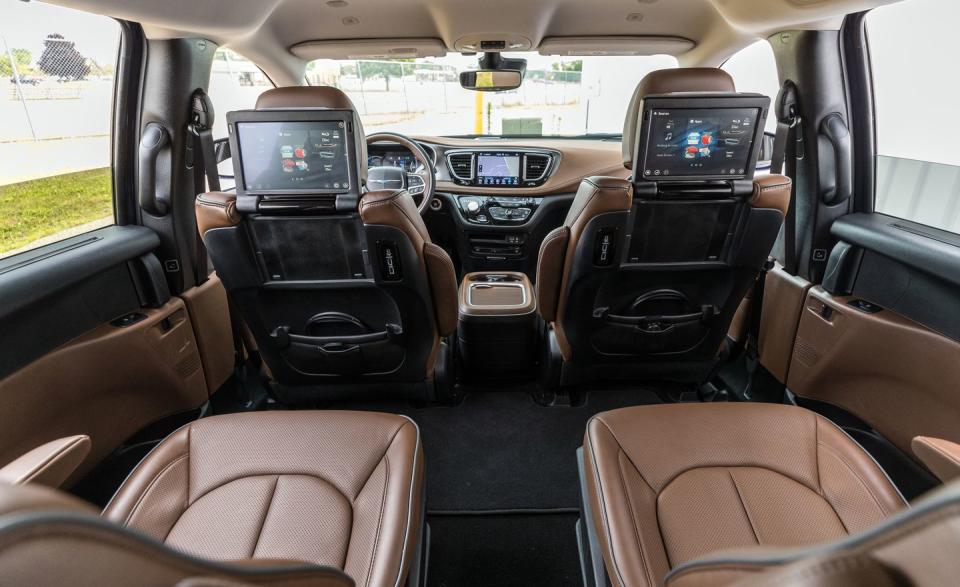Why Are Rear-Seat Entertainment Systems behind the Times?

Why are today's rear-seat entertainment systems so unappealing? It's not a new problem; think back to the days when you'd uniformly go to Circuit City or its competitors to get an aftermarket stereo put in the car. These places stayed in business because automakers couldn't bring themselves to install powerful stereos from premium audio brands. Every factory stereo was garbage, and everyone who cared about music trashed them. Thieves would break into cars to steal head units and the entire radios, which would require a second trip to Circuit City. You'd pick out everything, and guys in red shirts would strip your car and rewire it. My mom threw subs under both front seats of her Volvo 240. My uncle's Alpine system in his Ford Probe let everyone in Connecticut hear the rains down in Africa. You were balling if you had a pop-out video screen.
Modern car entertainment is brilliant, which helps explain why Circuit City is out of business. It's so brilliant, in fact, that you can't replace the hardware yourself unless you want to trigger a slew of warning lights from a half-dozen ECUs on the same wiring harness. So you don't touch stereos anymore. Automakers tune them to the exact cabin layout and compensate for interior materials. The best ones filter road noise, enhance poorer-quality signals, offer multiple surround modes, and make your home equipment feel inferior.
So why do some rear-seat entertainment systems still feel like we're on an eighth-grade field trip in a coach bus?
Screens stuffed into the backs of the front headrests used to scream technology. Now these displays look as nostalgic as portable DVD players. Look at how Buick charges $1750 for two tiny eight-inch screens—not so much installed as carved and glued—with two pairs of headphones on the Enclave. The Ford Expedition offers just about the same for $1995. There's coach-class entertainment in the back of the Infiniti QX80, too (pictured above), also featuring a pair of eight-inch screens. Even the best luxury cars don't attempt to integrate them with any class. They just enlarge the screens and stick them on the seatbacks like mall kiosks. You've just spent top money for an interior worthy of an art museum, and the automaker's finishing touches are two big black rectangles with the surface detailing of a microwave oven.

Granted, it may be worth watching Game of Thrones (or SpongeBob SquarePants) on a long car ride and set the navigation like a boss from the back seat. On the 7-series, BMW offers a removable tablet in the central armrest to operate the massage without using the main screens. That's a step up. Parents may swear by these systems to keep the children quiet and happy, even though the children are likely to have their own phones and tablets that are newer, faster, and better than anything in the car.
The only exceptions to the industry's middling rear-seat entertainment systems are the innovations from Chrysler and Honda. Unsurprisingly, minivan engineers know how to coddle the most discerning rear passengers better than anyone at Bentley. Not only do they pack the latest high-res inputs like Blu-ray and HDMI, their screens can hide. On the Pacifica, they swivel 180 degrees upward from the seatback.

On the Odyssey, it's a single widescreen unit that swivels downward from the roof and can split the screen in half. They don't ruin the look of the interior when they're off, which I'd wager is most of the time. The Pacifica has built-in games that are actually good. You (or your back-seat passengers) can play checkers against the enemy sitting next to you, count license plates, and learn basic math skills. Both cars offer the modern answer to "Are we there yet?" with real-time updates from the nav.

Toyota offers a split-widescreen setup like the Odyssey's, but only Honda goes full-on airline pilot. Tap the CabinTalk app on the front screen, and it will mute and pause whatever they're viewing back there for your important public announcement. It plays through the headphones and on the speakers in the third row. I'm driving a 2019 Pilot Elite right now by myself and really enjoy hearing myself yell.
These are the unique and useful features making rear-seat entertainment systems relevant and worth the upcharge. They're designed for the vehicle instead of appearing like aftermarket hacks from bankrupt chain stores. Rear passengers, you're long overdue for an upgrade.
You Might Also Like

 Yahoo Autos
Yahoo Autos 